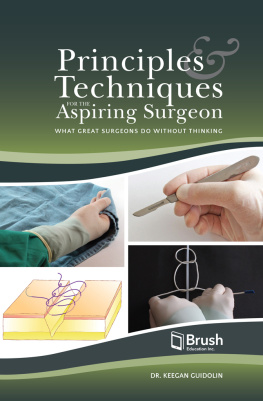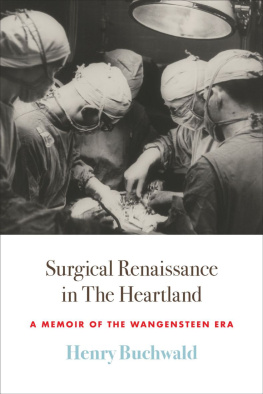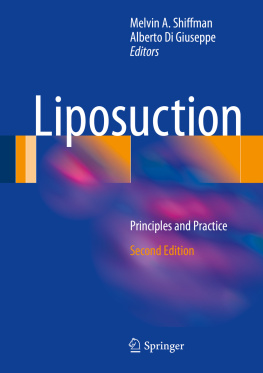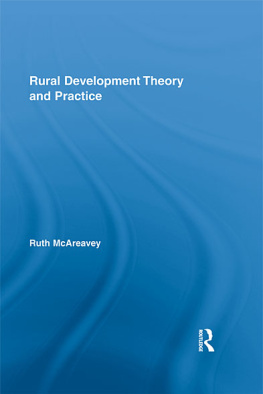ON CALL
A Rural Surgeons Story
J. LOTTMANN, MD

ON CALL
A RURAL SURGEONS STORY
Copyright 2014 J. LOTTMANN, MD.
All rights reserved. No part of this book may be used or reproduced by any means,
graphic, electronic, or mechanical, including photocopying, recording, taping or by
any information storage retrieval system without the written permission of the author
except in the case of brief quotations embodied in critical articles and reviews.
iUniverse
1663 Liberty Drive
Bloomington, IN 47403
www.iuniverse.com
844-349-9409
Because of the dynamic nature of the Internet, any web addresses or links contained in
this book may have changed since publication and may no longer be valid. The views
expressed in this work are solely those of the author and do not necessarily reflect the
views of the publisher, and the publisher hereby disclaims any responsibility for them.
Any people depicted in stock imagery provided by Thinkstock are models,
and such images are being used for illustrative purposes only.
Certain stock imagery Thinkstock.
ISBN: 978-1-4917-4515-1 (sc)
ISBN: 978-1-4917-4514-4 (e)
Library of Congress Control Number: 2014917454
iUniverse rev. date: 10/24/2014
CONTENTS
This is the story of a female rural surgeon. There arent very many of us around, so mine is an uncommon story. It spans a thirty-year practice (19812011) after schooling and training. My intent is to show the distinctiveness of a rural surgery practice and how it differs from an urban practice. I will also share how the scope of general surgery and my particular surgical caseload changed over that thirty-year period. This story includes the challenges of being a wife and mother as well as being a surgeonfrequently, the only surgeon in town.
The call came at about 2:30 a.m. It woke me from a sound sleep. The caller said, This is Tomah Hospital. We need you for a stat C-section.
I said, Okay. Ill be right there.
I got up, quickly put on a shirt and pants, slipped on my sandals, and headed out the door.
I live about a quarter mile from Interstate 90. I took the freeway for a short distance and exited to Highway 16. That would bring me closer to the hospital when I got to Tomah, which was about fifteen minutes away.
I could call the hospital on my way to learn more about the situation, but my primary intent was to get there as fast as I could because either the mother or the baby or both were in distress. On the way, I mentally reviewed what would need to be done.
When I got to the hospital, I went directly to the locker room, quickly changed clothes, and went into the OR. The OB provider met me in the OR and filled me in on the details.
The patient was a thirty-one-year-old Amish woman. This was her seventh pregnancy. She had had a stillborn with her last pregnancy. All her previous babies had been delivered by the Amish lay midwife. She was in active labor. She had started bleeding heavily with each contraction, so they brought her to the hospital. She had soaked three or four folded blankets with blood at home. She had had no prenatal care.
An ultrasound at the hospital had revealed that she had a placenta previa. The placenta was at the bottom of the uterus, over the outlet, and as the cervix dilated, the placenta was separating from the uterus and bleeding. As the placenta pulled away, less oxygen was getting to the baby. The only way to stop the bleeding and save the baby was to do a C-section.
As the OB provider was telling me this, I was helping hold the patient in the proper position so the anesthetist could place the spinal anesthetic.
Once the spinal was in, we scrubbed and gowned up as the nurse prepped the patient. Another physician was present to care for the baby. We draped the patient, and I asked my assisting physician to put his finger on the patients left iliac crest while I put my finger on the right one to orient me to the anatomy.
Anesthesia gave me the go ahead, so I made the skin incisiona slightly curved horizontal incision in the lower abdomenfrom just shy of one iliac crest to just shy of the other.
I extended the incision through the fat and down to the muscle fascia. Then I cut across that fascia. Lifting the upper cut edge with clamps, I pushed the muscle away on both sides and then cut up the midline to just below the belly button. I did the same thing by lifting the lower edge of the fascia and cutting down to the pubic bone. I divided the muscle at the midline and tented the peritoneum between clamps. When I cut the peritoneum, I was in the abdomen.
I then pushed the large uterus up toward the patients head and made a small incision where the peritoneum reflected onto the bladder. I pushed the bladder down to get it away from where I was going to make my incision in the uterus. I made a small horizontal incision in the uterus. I extended the incision with my fingers in both directions. The first thing I encountered was the placenta, but it pushed away easily. I then saw the amniotic sac. I opened it with care so as not to injure the baby. The waters had already broken, so there wasnt much separating me from the baby. I found the babys legs, but there appeared to be a narrowing of the uterus that wasnt allowing the rest of the baby to come down. With my assistant putting pressure on the uterus from above and me gently pulling on the legs, we were able to deliver the baby. The cord was clamped, and the baby was handed off to the physician who was there to care for the baby. The baby looked good.
The placenta wasnt attached to much anymore, so it came out easily. All was well.
I closed the uterus with two rows of sutures.
Below the closed uterine incision, there was a bleeder near the bladder that was bleeding more than I wanted to leave behind. I put in a figure eight suture around it to stop the bleeding. Once I tied the suture, I had what looked like four fountains of bleeding instead of one bleeder, one at each hole where the needle went in the tissue. This was the area where the placenta had been attached, and it was apparently very thin and tenuous.
I put pressure on the spot for five minutes. Pressure stopped the bleeding, but when I let up on the pressure, it started bleeding again. I didnt think putting in more sutures would help. I tried a fibrinolytic agent that was supposed to help stop bleeding, but after putting on the agent and putting on pressure for another five minutes, it didnt stop or even slow down. I had control of the bleeding when I had pressure on the area, but I couldnt close the patient with my hand in there.
I tried more of the fibrinolytic agent and more pressure, but nothing seemed to help. She was bleeding more.
I told the anesthetist he needed to put the patient to sleep. The spinal anesthetic we used only lasts about an hour, and she was starting to feel things. Further, with her previous blood loss and what we were currently losing, we needed to start thinking about giving her some blood replacement.
I considered my options. We could attempt to control the blood that was coming to the area by tying off the two large arteries that supply the uterus, but doing that would not guarantee that we would control the bleeding. An area so low on the uterus may have blood supply from the vagina as well. If we removed the uterus, in other words, did a hysterectomy, we would stop the bleeding because we would be removing the part that was bleeding. I decided to do a hysterectomy.
I asked the nurse to call the other surgeon who was in the area to see if he could come in to help. Thankfully, he was available and came in.
We would soon use up all the blood products we had available at the hospital that were compatible with this patient. We called in the maintenance personnel and sent them to La Crosse to get more. We called ahead to order what we thought we would need. They made more than one trip that early morning.
Next page








